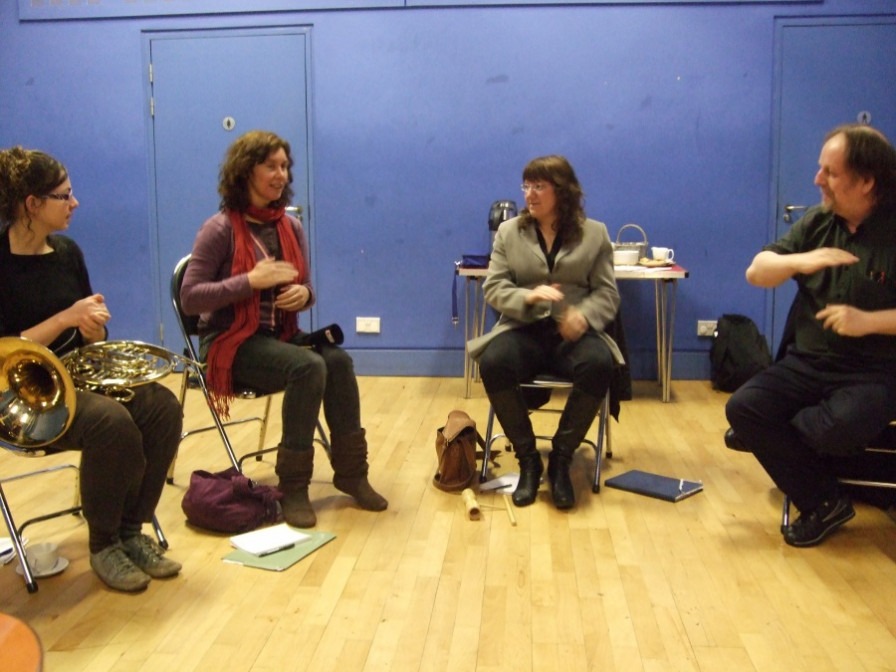Questions for practice-sharers: what's important in sharing effective practice?

Often when you’re sharing practice, you want to share it with people who perhaps have no understanding, perhaps little concept even of what you do. If people have never seen anything like what you do before, or have no experience of anything similar, then you may have to work hard to interest them, to open their minds or to convince them.
In developing various areas of work around practice sharing, we have been talking to a lot of serious practice-sharing experts (!) – practitioners, trainers, resource pack producers, network-facilitators, learners and others – and from these discussions there seem to be a series of key questions that people need answered when learning from someone else’s practice – in other words that kinds of questions that people sharing practice need to answer.
Questions around documenting and capturing practice:
- What is this practice? I have no concept of this - what does it look like?
- What are you actually doing -- can you describe or explain it?
- Who do you do it with? What kind of people in what circumstances?
- What works well (and why - don't forget the why!)?
- What doesn't work so well, or hasn't worked so well in the past (and why)?
- Can you describe how you developed this practice?
- How could this practice be improved further and be even more effective?
Questions around evaluating practice:
- What’s so good about this practice? Why should I be interested?
- What does it achieve? What difference does it make?
- What evidence have you got that it achieves what you think it does? (e.g. can you demonstrate the distance participants have travelled and the development they’ve made?)
- What do other stakeholders and participants think about this practice – can you bring in other people’s perspectives?
Questions around communicating practice and enabling others to practise it:
- How have you learnt to do this?
- How could I learn to do it?
- I think I do this already; how can I be sure?
- Where can I find someone to help me with this?
And those point to three particular activities in practice-sharing:
- documenting and capturing
- evaluating
- communicating and enabling
This video clip below is an example from the Youth Music Network of where one organisation, with Youth Music’s support, has been trying to do these three things.
Sightlines are a small organisation in the North East who work with early years children’s ideas. Youth Music has been supporting them through spotlighting to create video-based learning resources about their practice.
This clip is a short edit from these resources. I’ve not put it in this blog post, which is about how you can share practice, because I think it’s the bees knees, or because I think everyone should find out about how Sightlines develop children’s ideas (although I do think what they do is very effective). I’ve put it in here because I think it’s a good example of practice-sharing: they capture on film what they’re doing, so you can see it yourself; they document the practice by describing what the music leaders do, and they evaluate some of the outcomes of this practice, in this case for the staff in the early years setting. Finally, I hope that even this short clip communicates a sense of what they do and perhaps might begin to enable other people do it themselves – standing back and observing children’s ideas as they grow.
There’s a growing collection of online materials on the Youth Music Network for sharing practice. Hopefully people will look at the materials and learning experiences that Sightlines and others have created, and have experiences that are related, or perhaps they’ve developed similar practice. Or perhaps their experiences conflict with what these organisations have found. Or perhaps they’ll feel inspired to try out what these organisations do. In all of these cases, I hope that they, and readers of this blog, share the experiences, the findings, the practice on the site.
Here, again, is that map of 18,000 people in and around music education. Think about how much could be learnt from all those people, and about how much they could learn from you…
A map showing 18,000 individuals (green) and organisations (red) in and around music education, as signed up to MusicLeader.
Additional resources:
- An introduction to Youth Music's Spotlighting pilot programme for enabling the sharing of effective practice, with links to spotlighting learning materials
- Luke Dickens' research report on Sharing Effective Practice
- Youth Music's Strenthening the Sector funding modules, including the Spotlighting and Networking modules

